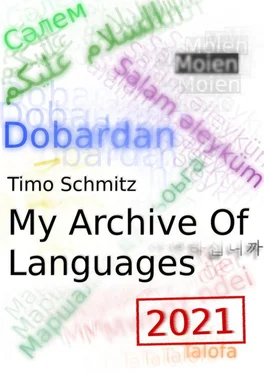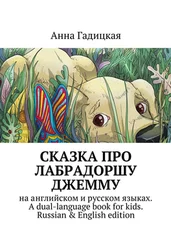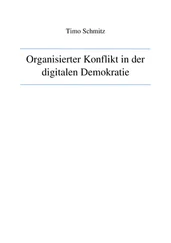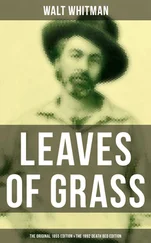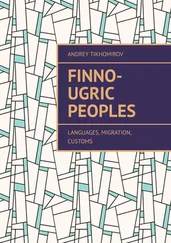yiex – we (dual form exclusive: me and another person)
eix – we (including the speaker), in Myanmar also written: ex – cp. Chinese ‘zanmen’
yix – we (excluding the speaker) – cp. Chinese ‘women’
maix – you
pax – you (dual)
beix – you (plural)
nawh/ naoh – he, she, it
noh – he, she, it (Chinese Wa)
gix – they
Family
pake – brother, sister
grhoh – being unmarried
bun: miex – married woman
mex – to marry
sinaw bun – young girl
sinaw mex – young boy
miex – mother
Sexuality
kakaong – naked
ku: kaong: – naked
alo nex nham: – sexual desire
lu liiet – sexy, seductive
khax – to have sex
iex – to have sex
peut – to have sex
bed – to have sex (Chinese Wa)
vao – extramarital sex (also a synonym for adultery, since sex outside of marriage is uncommon for the Va)
kong: – feeling aroused
he: – sexual feelings
Simie maix ti koe kawn mai aux lie? – Do you want to have children with me ?
simie maix ti – you want
simie – want
koe – have
kawn – children
mai – with, and
Hoik koe kaux maix lie? – Are you pregnant?
Mawh maix bun krih lie? – Are you virgin?
mawh maix – are you
bun krih – virgin girl
bun – girl
krih – virgin
simex – man
phan bun ang koe – without a woman
juang – body
Beauty
mhawm muh – cute
mhawm grang: – beautiful
nyawm tix yaox – handsome
grang: – handsome
mhawm grang – pretty
Aux ce pot maix sidaing mhawm grang. – I think that you are very pretty.
Aux ce – I think
Transport
law: li: – car
law: li: ngawm: nyo: – scheduled public transport bus
cag pu – airplane
cag daw: rhiem – train
Technical world
cag lox – phone call
cag lox taix – mobile phone
cag dong – computer
cag dong taix – notebook
rhoi grub – internet
dong kaing – function
rhoi cag – signal
phaw lox – chat
cag jhak riang – tv
mhai ra toe – QR-code
(Precious) material
khri – gold
mau: – silver
tawng: – copper (cf. Chinese ‘tong’)
kung: – ore
Feelings and attitudes
rhawn – love
riem – fear
Sae riang ! – Work hard !, hard-working
ad rhawm – angry
soung – sad
ang soung – not sad
gin soung – very sad
sibieh – generous
sibieh rhawm: - show good intentions, have a good heart
hmom hrom – good-hearted, kind (Chinese Wa)
pig te ne rhawm – to regret
rau rhawm, raeh hrom – loyal, devoted
rhawm – heart, save, accumulate
rhawm caox – evil intentions (Chinese Wa: hrom jaox)
rhawm muih – good intentions, good heart
Spelling varieties: mhawn – mhawm, sawn – sawm, rhawn – rhawm
Spoken in: Myanmar, Yunnan (China), India (known as ‘Singhpo’), Thailand
Official language in: Dehong Dai and Jingpo Autonomous Prefecture in Yunnan (PRC), probably in Kachin State in Myanmar
Speakers: c. 900,000; c. 500,000-800,000 in Myanmar , c. 100,000 in China
Scripts: Latin alphabet
Kachin (Myanmar)
Aalu ai jahpawt – Good morning!
Aalu ai shanyi – Good afternoon!
Aalu ai shana – Good evening!
Hkam kaja ai i? – How are you?
Chyeju kaba sai – Thank you
Chyeju kaba sai yaw – Thank you
Hkam kaja nga ai i? – How are you?
kaja ai – good
nang kaw taw? – and you?
ma nang wa – my friend
Pronounciation:
(not in IPA, to ensure that it can be displayed on all kind of mobile devices)
Aalu ai jahpawt /A:lu ai djä’pɔ:/ - dj a bit like French
Aalu ai shanyi /A:lu ai shä:-ni/
Aalu ai shana /A:lu ai shä’na:/
Hkam kaja ai i /Kăm kätja: a i i:/ - kaja is a bit like Chinese ‘kejia’
Chyeju kaba sai /djexü kapa: sai/ - x like Chinese Pinyin, ai like German
Chyeju kaba sai yaw /djexü kapa: sai yɔ/
Kaja ai /kat-sha ai/
nang kaw taw ? /nang gɔ dɔ/
Ngwi pyaw ai shanyi rai u ga – Have a nice day
ngwi pyaw – happy
shanyi – day
Na a mying kara hku nga a ta? – What’s your name?
Ngai na mying...re – My name is ...
Nang gara buga na rai? – Where are you from?
Ngai gaw ... re. – I am from ....
Jinghpaw mung na re – Kachin State
Sam mung na re – Shan State
Conversation:
Phyu Phyu: Aaalu ai shanyi.
Ko Ko: Aalu ai shanyi.
Phy Phyu: Hkam kaja nga ai i?
Ko Ko: Kaja ai, nang kaw taw?
Phyu Phyu: kaja ai, chejyu kaba sai, ma nang wa.
Ko Ko: Mai sa. Na a mying kara hku nga a ta?
Phy Phyu: Ngai na mying Phyu Phyu re. Nang gara buga na rai?
Ko Ko: Jinghpaw mung na re. Nang gara buga na rai?
Phyu Phyu: Sam mung na re.
Ko Ko: Ngwi pyaw ai shanyi rai u ga.
Jinghpaw buga – Kachin State
e law – yes
hpang de she bai hkrum ga – See you later!
hkam – health
Kkrum zup lu ai majaw kabu ai yaw – Nice to meet you!
Asak gade ning rai sai rai? – How old are you?
lanai- 1
lahkawng - 2
masum - 3
mali - 4
manga - 5
karu - 6
sanit - 7
masat - 8
jahku - 9
shi - 10
shi langai - 11
shi lahkawn - 12
hkun - 20
hkun langai - 21
hkun lahkawn - 22
sum shi - 30
sum shi langai - 31
sum shi lahkawng – 32
Jingpo, Yunnan (China)
wa – boy
jan – girl
la – man
num – woman
gasha ni – children
ma – kid
jongma ni – students
ntai – this
ngai – I
nang – you
hkyi – he, she, it
yanhte – we
nanhte – you (pl.)
hkanhte – they
bra – to break up
sa poi – table
Spoken in: Nujiang Lisu Autonomous Prefecture, Dehong Dai and Jingpo Autonomous Prefecture, Dali Bai Autonomous Prefecture, Baoshan Prefecture, Lincang Prefecture, Weixi Lisu Autonomous County in Diqing Tibetan Autonomous Prefecture – all of them in Yunnan, China; Kachin State (Myanmar), Shan State (Myanmar), Arunachal Pradesh (India), Chiang Mai (Thailand)
Official language in: Nujiang Lisu Autonomous Prefecture and Weixi Lisu Autonomous County in Diqing Tibetan Autonomous Prefecture (Yunnan, PRC); probably in Kachin State in Myanmar as minority language
Speakers: c. 900,000
Scripts: Latin, Fraser alphabet
Lisu in China
Nujiang Lisu of Liuku Town 傈僳语 (云南省怒江州泸水县六库镇)
huo hua, ho hua – Hello!
nu mi a shi mi? – What’s your name?
mwang ni – My name is
ne a kua gu la ni a, nu a li kuan gu la ni a – Where are you from?
mwa dengguo gu la ni (y)a – I am from Germany.
ne a li we tju-a – How old are you?
mwa … swi la – I am … years old.
mwa er shi swi tjo gu – I am 20 years old.
ti, yi – 1
ni, ǝr – 2
sa – 3
li(ng) – 4
ngu-a – 5
jiu – 6
Lisu in Myanmar
ngwa – I
nu – you
yi – he/ she/ it
raw – we
nu wa – you (pl.)
yi wa - they
hte – this
gaw – that
Fraser suggests in his Handbook of the Lisu language (1922) the following examples:
hte-ma nya ngwa rgh uga law – This is mine (p. 8) – note that Lisu has no possesive forms and that the personal pronoun is used.
A va hte-ma – this pig (p.12)
H’i gaw-ma – that ouse (p. 12)
La-htsaw hte-a – this man (p. 13)
Читать дальше
